What is Meibomian Gland Dysfunction (MGD)?
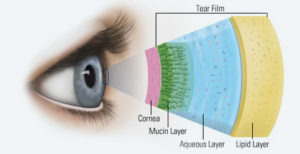 The lids contain numerous meibomian glands that secrete oils into your tear film. These oils prevent evaporation of your tears, as well as forming a smooth and lubricated surface for clear vision. MGD occurs when these glands are not working properly. The oily secretions produced are of poor quality or the glands become blocked and atrophied. Meibomian gland Dysfunction (MGD) is a chronic diffuse abnormality of the meibomian gland commonly characterized by terminal duct obstruction which may result in alteration of the tear film.
The lids contain numerous meibomian glands that secrete oils into your tear film. These oils prevent evaporation of your tears, as well as forming a smooth and lubricated surface for clear vision. MGD occurs when these glands are not working properly. The oily secretions produced are of poor quality or the glands become blocked and atrophied. Meibomian gland Dysfunction (MGD) is a chronic diffuse abnormality of the meibomian gland commonly characterized by terminal duct obstruction which may result in alteration of the tear film.
Meibomian glands
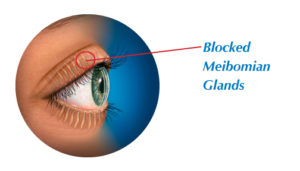 Meibomian (“my-BOH-mee-an”) glands are the tiny oil glands which line the margin of the eyelids (the edges which touch when the eyelids are closed). There are about 25 to 40 meibomian glands in the upper eyelid and 20 to 30 in the lower eyelid. The function of these glands is to secrete oils onto the surface of the eye. These oils help keep the tears from evaporating too quickly. The tear film lubricates and keeps the surface of our eyes healthy; it also affects how clearly we see. Pathogenesis of MGD Meibomian gland located in the tarsal plates of the eyelids opens at the posterior lid margin. It is the chief source of lipids for the human tear film and functions in stabilizing the tear film. It forms a protective barrier against microbes, dust, and pollen. MGD is an obstruction of terminal ducts. Factors such as age, sex, hormonal disturbances and topical medication influence the obstructive process. MGD results in increased evaporation and instability of the tear film. It increases bacterial growth on the lid margin, evaporative dry eye, and ocular surface inflammation.
Meibomian (“my-BOH-mee-an”) glands are the tiny oil glands which line the margin of the eyelids (the edges which touch when the eyelids are closed). There are about 25 to 40 meibomian glands in the upper eyelid and 20 to 30 in the lower eyelid. The function of these glands is to secrete oils onto the surface of the eye. These oils help keep the tears from evaporating too quickly. The tear film lubricates and keeps the surface of our eyes healthy; it also affects how clearly we see. Pathogenesis of MGD Meibomian gland located in the tarsal plates of the eyelids opens at the posterior lid margin. It is the chief source of lipids for the human tear film and functions in stabilizing the tear film. It forms a protective barrier against microbes, dust, and pollen. MGD is an obstruction of terminal ducts. Factors such as age, sex, hormonal disturbances and topical medication influence the obstructive process. MGD results in increased evaporation and instability of the tear film. It increases bacterial growth on the lid margin, evaporative dry eye, and ocular surface inflammation.
MGD Symptoms
Although patients often volunteer their ocular symptoms, direct questioning can usually elicit some or all of the following :
- Soreness
- Scratchiness
- Grittiness
- Burning
- Stinging
- Momentary blurriness clearing with repeated blinking
- Stickiness
- Tiredness
- Transient foreign body sensation
- Paradoxical watering/epiphora
- Short reading duration because of discomfort
- Constant awareness of the eyes.
- Dry feeling eyes
- Distress from being unable to achieve any ocular comfort or relief
Signs of Meibomian Gland Dysfunction.
Careful examination of the lids, lid margins, and pre-corneal tear film is necessary to appreciate all the signs of MGD but the more florid disease can be seen easily without slit-lamp biomicroscopy. Signs you may see are :
- Champagne/lemonade bubbles as lid margin froth
- Abnormally thick viscous Meibomian secretions
- Turbid white or yellow cloudy material can be expressed from orifices
- Inspissated secretions with „pointy‟ solidified proud ends
- Glandular obstruction with masking or loss of orifices
- Capping of orifices with „pseudo-blisters‟
- Vascularised lid margins
- Macerated soggy lid edges
- Collarettes of debris around lashes
- Crusty debris at the lid margin
- Conjunctivalisation of the posterior margin of the lid
- Keratinisation of the lid margin with obfuscated MG orifices
MGD Treatment
There are a number of ways in which MGD can be treated. It is best, however, to use a combination of these methods in order to control and manage your MGD.
- Warm compress therapy: Warm compress therapy is a technique designed to unblock the meibomian glands, restoring them to normal health. This needs to be done at least once (though preferably twice) a day. Rest a heat pack over the eyelids for a few minutes. This will ‘melt’ the oils and help unblock the glands. With your finger or warm washer, gently massage the upper and lower lids in the direction towards your eye. Repeat this procedure a couple of times; ensuring the washer or heat pack remains warm.
- Lid scrubs: If associated with blepharitis (inflammation of the eyelids), lid scrubs, such as OcuSOFT will need to be used to clean the lid margins of infection and debris. Effectively removes oil, debris and desquamated skin from the eyelids. Utilizes a low-level preservative blend providing a wide range of anti-bacterial activity. Recommended for patients with moderate-severe eyelid conditions. This clinically proven, laboratory tested formula is safe and effective for lid hygiene. More information can be found at OCuSOFT Lid Scrub PLUS Pads .
No products found.
- Bicarbonate of soda eyewash: An eye bath of 1 teaspoon bicarb soda in half a litre of boiled water, which is to be kept in the refrigerator in a clean screw-top container and replaced every second week. The eyewash can be used with either an eye bath, cottonwool or cotton buds. The refrigerated solution must be kept clean and therefore a portion of the solution should be tipped into a clean glass each day with the remainder being kept refrigerated in a screw-top bottle.
- OptiMel Manuka Honey: Applying antibacterial manuka honey to the lid margins twice a day with a cotton bud kills and prevents the accumulation of bacteria along the lid margin. This will minimize the severity of the condition and reduce symptoms.
- Ocular lubricants (artificial tear supplement): These drops ensure there is a sufficient coating of tears across the eye, preventing further dryness complications.
- Omega 3 and Flaxseed oils: In addition to other health benefits, flaxseed oil and Omega-3 fatty acids (2000mg/day) will improve the quality of the meibomian gland secretions. Strict compliance with a lid care regime is crucial. It may however still take 1-2 weeks before an improvement is noticed. Symptoms will return if treatment is ceased. For high efficiency and quick result, there is the option to buy omega-3 supplements. Blepharitis Wiki strongly suggests the following link which it is considered one of the best in the world: Dr. Tobias Omega 3 Fish Oil Triple Strength. One capsule every day is enough to relieve most of MGD’s symptoms after 3 weeks and increase the efficiency of other treatments.
No products found.
References
https://www.eiseverywhere.com/-MeibomianGlandDysfunctionTeifiJamesHandout.pdf
http://calendar.clemson.edu/-event/backyard_poultry_workshop_-_poultry_health#.WBornS196Ul
https://www.eyecareplus.com.au/doc/mulgrave/-Meibomian%20Gland%20Dydsfunction%20.pdf
http://218.248.31.202/-newsletterproject/issue/linkfiles/SL000377.pdf
http://cdn.myld.com.au/2/1037/helen-summers-optometrist-eyecare-plus-darwin_c814f86b89.pdf

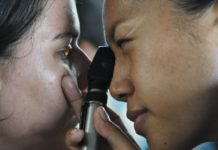
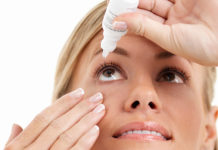


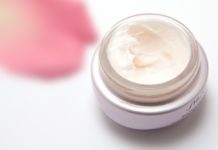
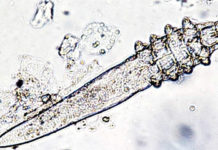

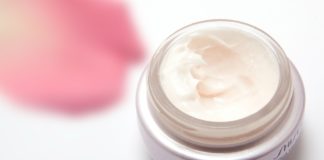



Can Meibomianitis cause your sinus glands above your eyes and nose become impacted due to severity and lack of drainage from your eye glands being blocked?